Disrupting for Good: AI, ...
Online Conference
28 Jan 2026 / 29 Jan 2026 read more
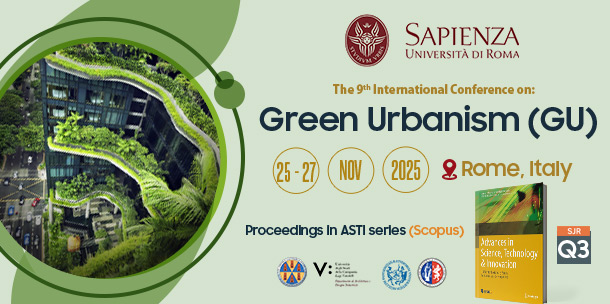
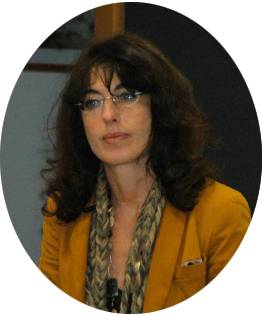 Carmelina Bevilacqua
Carmelina BevilacquaAssociate Professor in City and Regional Planning at the Departmnet of Planning, Design, Architectural Technology Sapienza University of Rome, Italy.

Professor at the Urban Planning Department of Architecture, Polytechnic School University of Palermo, Italy.
Subscribe to our newsletter
The Ninth Edition of the International Conference on “Green Urbanism” was successfully held from 25 to 27 November 2025, in collaboration with Sapienza University of Rome, which served as the main host of this year’s event. The conference brought together researchers, academics, architects, environmental specialists, engineers, and students from across the globe, all committed to advancing sustainable and resilient urban development.
Organized by IEREK, the conference once again served as an essential platform for exchanging knowledge, presenting innovative research, and fostering collaboration across disciplines. Through keynote speeches, scientific sessions, and interactive discussions, participants explored forward-thinking strategies and practical solutions to address the environmental, social, and technological challenges facing contemporary urban environments.
Key themes highlighted during this edition included:
Day 1:
Opening Ceremony:
The Opening Ceremony began with conference registration, followed by a series of welcoming addresses. The first speech was delivered by Dr. Mourad Amer, CEO & Founder of IEREK, who officially opened the event and welcomed all participants. This was followed by a welcoming address from Prof. Carmelina Bevilacqua, Associate Professor in City and Regional Planning at the Department of Planning, Design, Architectural Technology, Sapienza University of Rome, Italy. Next, Prof. Ferdinando Trapani, Associate Professor in City and Regional Planning at the Department of Architecture, Polytechnic School, University of Palermo, Italy, shared his remarks. The ceremony concluded with a speech from Prof. Nada Rožmanec Matičič, Acting Dean and Founder of the Faculty of Design, representing the co-host university.
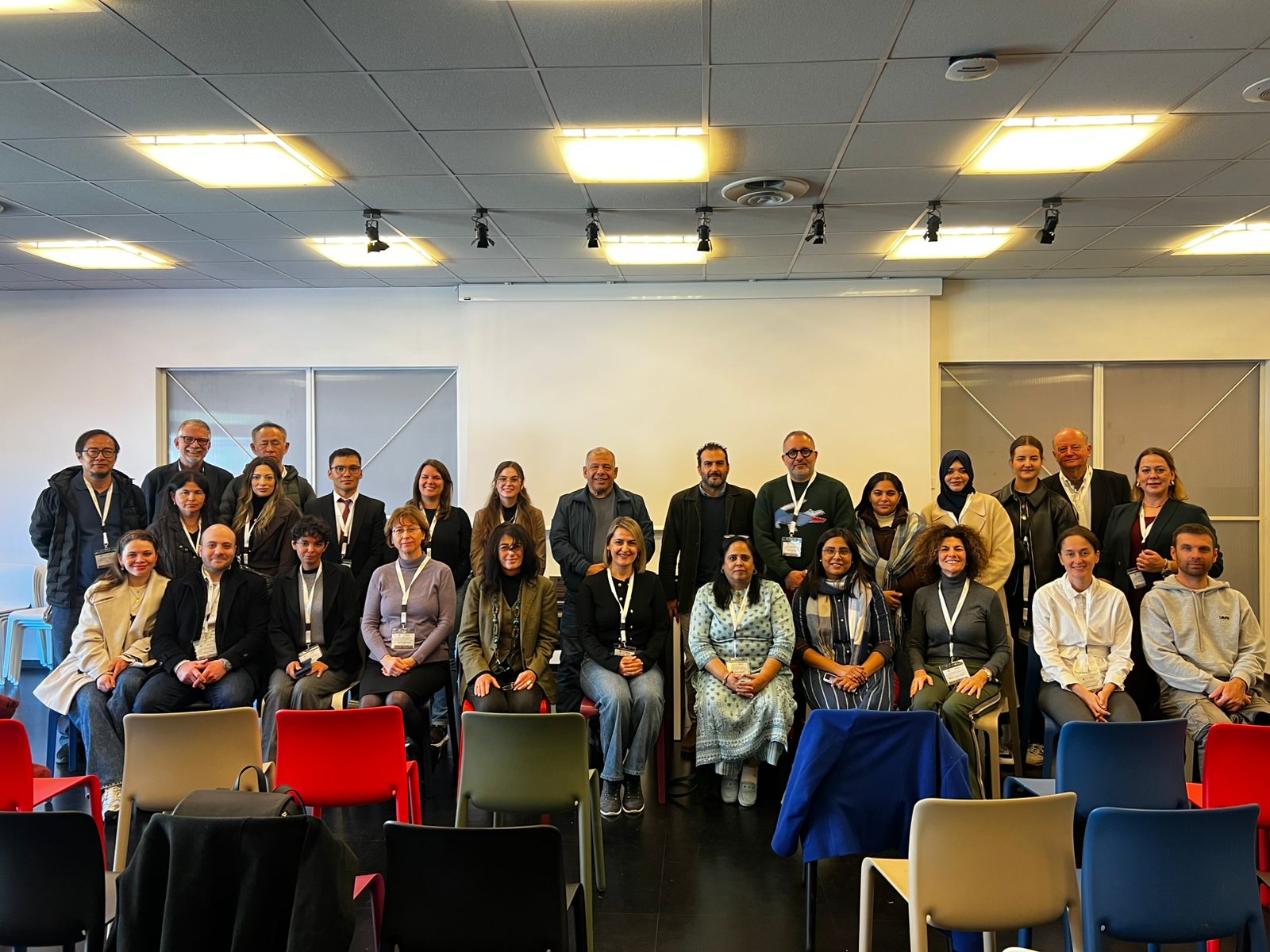
Plenary Session:
The plenary session featured a remarkable group of keynote speakers who shared their expertise and vision for sustainable urban development. Prof. Bertram Niessen, Presidente, direttore scientifico e socio fondatore, opened the session, followed by Prof. Stefano Moroni, Professor of Planning at Milan Polytechnic University, Department of Architecture and Urban Studies. Insights were also presented by Prof. Michele Sbacchi, Full Professor of Architecture Design at the University of Palermo, Department of Architecture, and Prof. Gioia Gibelli, Past President of the IALE Italian Region. The session concluded with contributions from Prof. Marina Rigillo, Associate Professor at the University of Naples Federico II, Department of Architecture (DIARC), and Prof. Nadia Charalambous, Associate Professor at the Department of Architecture, University of Cyprus. Their presentations highlighted innovative approaches and strategies for advancing green urbanism worldwide.

Masterclass Sessions:
The first day of the conference wrapped up with insightful Masterclass sessions titled “Natural Capital in Urban Planning: Methods, Strategies and Tools.” The sessions were expertly chaired by Prof. Francesca Perrone, Alessandra Addessi, and Irene Poli from the PDTA Department at Sapienza University of Rome. Presentations were delivered by Lucia Saganeiti and Angela Pilogallo from the Institute of Environmental Analysis Methods, CNR; Elisa Avellini from Roma Tre University’s Architecture Department; and Eugenia Vidal Casanovas from UDPD, Barcelona Metropolitan Area. The day concluded with a conclusions and debate session, bringing together ideas and successfully closing the first day of the conference.
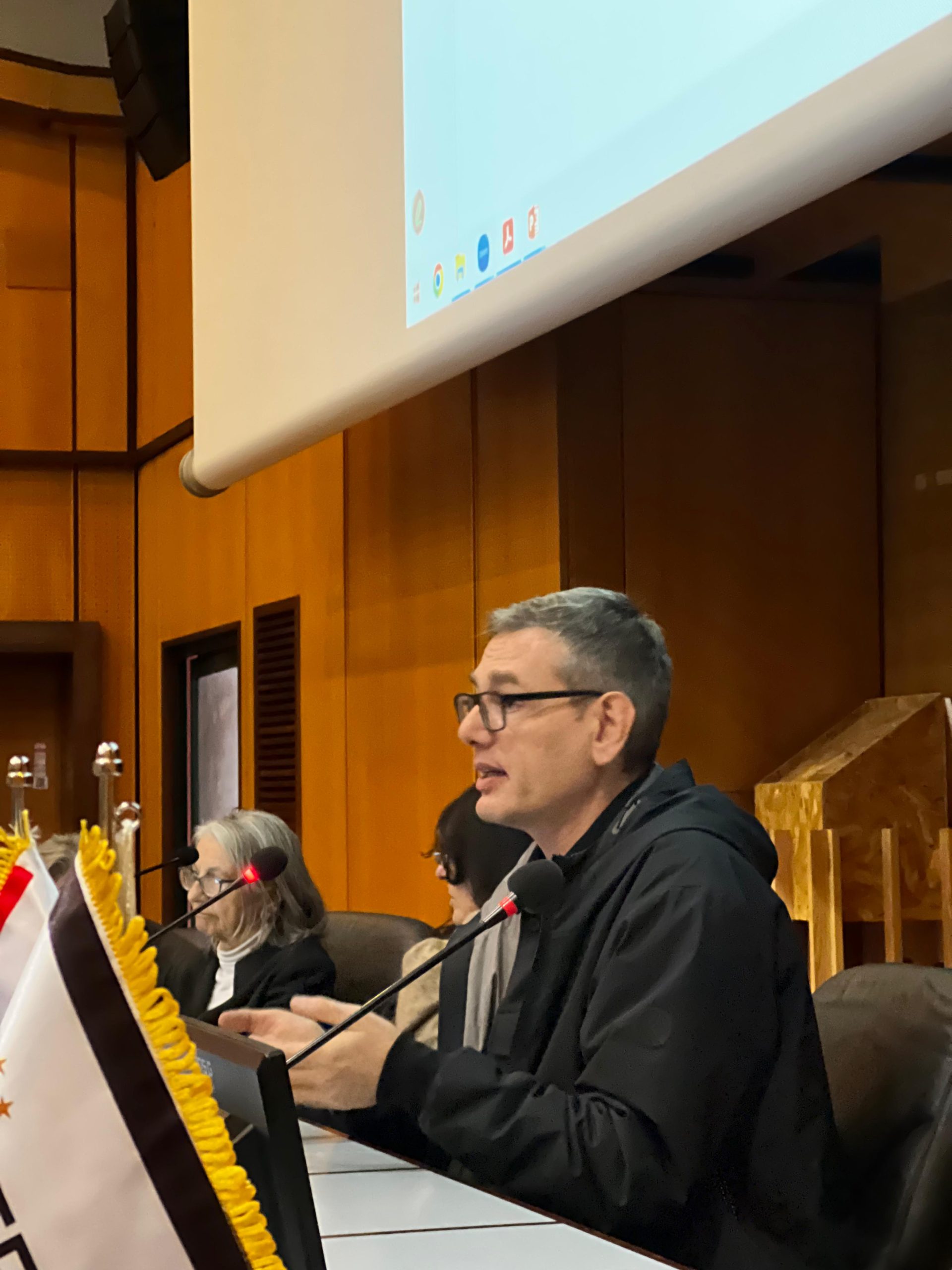
Day2:
The second day of the conference featured physical parallel sessions, bringing together experts and researchers from around the world. The sessions were moderated by Prof. Carmelina Bevilacqua (DTA Department, Sapienza University of Rome), Prof. Pasquale Pizzimenti (Department of Architecture, DARTE – University of Reggio Calabria), Prof. Bruno Monardo, Prof. Francesca Perrone, Prof. Marsia Marino, and Prof. Aliana Rosendo Veliz (PDTA Department, Sapienza University of Rome), along with Prof. Ferdinando Trapani from the Department of Architecture, University of Palermo. The day concluded with the presentation of seven conference sessions, highlighting diverse research and fostering engaging discussions on innovative solutions in green urbanism.
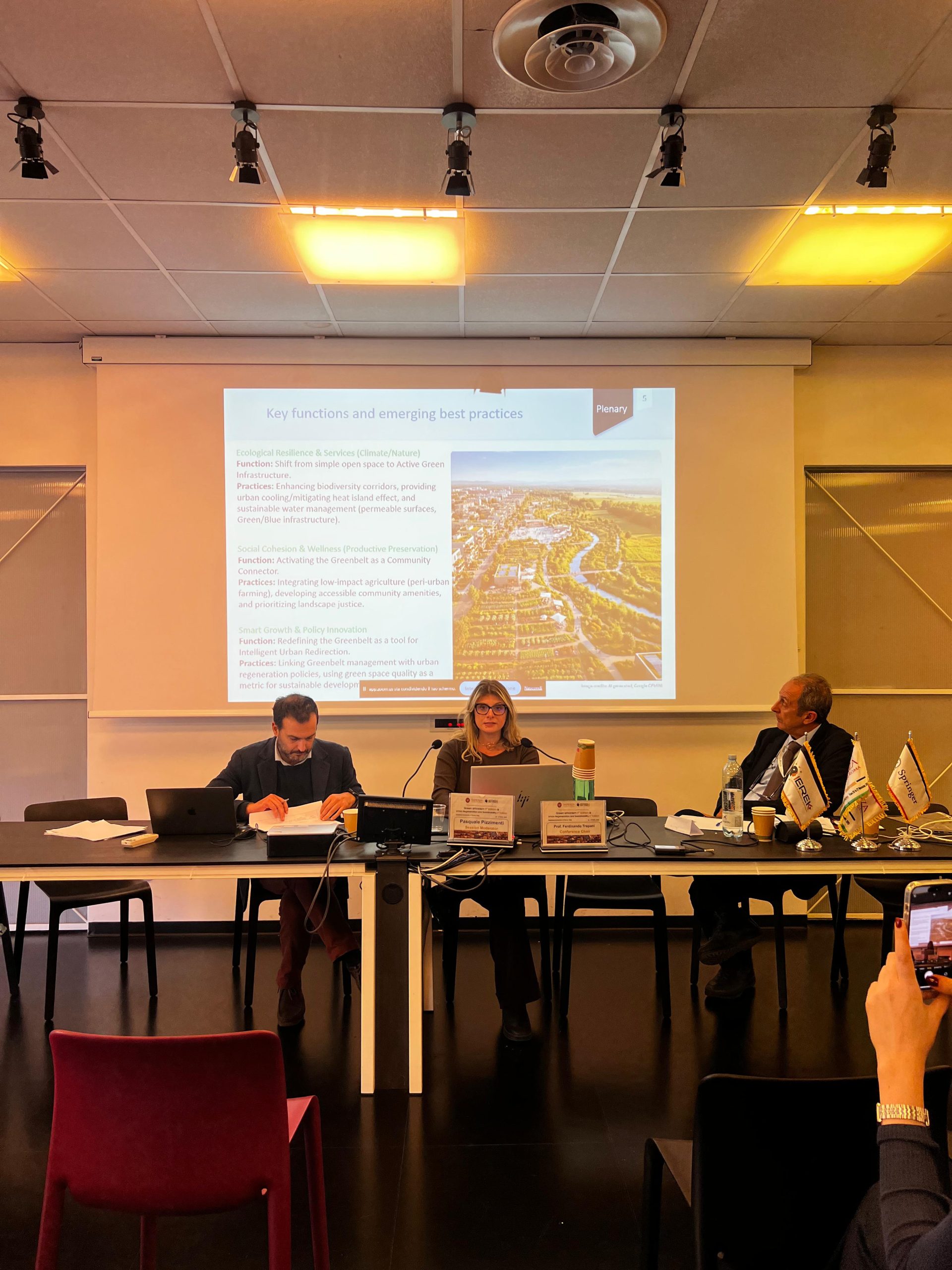
Day3:
The final day of the conference featured two physical parallel sessions and two online parallel sessions, providing participants with diverse platforms to present research and exchange ideas. The physical sessions were moderated by Prof. Pasquale Pizzimenti (Department of Architecture, DARTE – University of Reggio Calabria), Prof. Carmelina Bevilacqua, Prof. Mario Cerasoli, and Prof. Aliana Rosendo Veliz (PDTA Department, Sapienza University of Rome). The online sessions were led by Prof. Francesca Perrone (PDTA Department, Sapienza University of Rome), Prof. Barbara Lino (University of Palermo), Prof. Riccardo Guarino (University of Palermo), Prof. Benedetta Masiani (University of Florence), and Prof. Luisa Lombardo (University of Palermo).
The sessions concluded with an interactive discussion and Q&A, followed by closing remarks and the official ceremony. The conference wrapped up with a guided tour of the Roman Forum, including the Imperial Forums and Palatine Hill, marking the successful conclusion of a three-day event full of knowledge exchange, collaboration, and inspiration.
Over half of all people on the planet now reside in cities, a number that is steadily rising. Most of the time, cities have struggled to properly adjust to the influx of new citizens. Among the effects are urban sprawl, pollution, and inadequate mobility. The necessity to create new cities with an emphasis on sustainability and environmental well-being, as well as to shift existing cities from dispersion to consolidation, gave rise to green urbanism. The realization that urbanization is a major contributor to carbon emissions, resource depletion, and environmental deterioration has an impact on the rise of green urbanism.
Green urbanism is a method of sustainable urban planning that produces environmentally friendly communities by reducing emissions and waste, encouraging the development of green areas, utilizing sustainable building materials, and encouraging the use of electrified transportation. The goal of green urbanism is to utilize less energy, water, and materials throughout the whole life cycle of a city or district. The goal of green urbanism is to build thriving, integrated, and cohesive communities. This can be done by implementing strategies like mixed-use developments and inexpensive housing, which encourage greater social inclusion and sustainability and aid in the repopulation of city centers, regional cuisine, and short supply chains.
In an attempt to keep the conversation about green urbanism going, IEREK is organizing its 9th international conference titled “Green Urbanism”. Green urbanism was largely influenced by the growing knowledge of climate change and the necessity for completely new city models and typologies that are expected to develop. The idea of green urbanism highlights how crucial it is to rethink current cities and their infrastructure in order to make them compact, multipurpose, and polycentric with an emphasis on sustainability and environmental friendliness. The adoption of green urbanism ideas has also been fueled by the significance of urban greening and green spaces in present and future urban developments.
Conference Scope
The 9th edition of the "Green Urbanism” conference aims to provide a platform for professionals, researchers, policymakers, and stakeholders from various areas of life to come together and explore the multifaceted dimensions of green urbanism. The conference discusses a number of topics related to sustainable urban development, including improved urban governance, leadership, and best practices, urban planning and transport, sociocultural features, and social sustainability.
Statement of Purpose
The purpose of the conference is to allow participants to engage in discussions, share innovative ideas, and learn from successful case studies and best practices. The necessity to change cities into sustainable and ecologically friendly models of human habitation gave importance to the concept of green urbanism and the need to speak about it. Knowledge of the detrimental impacts of urban growth, awareness of climate change, and the necessity of completely new city typologies and models that emphasize sustainability and environmental well-being have been impacted by the idea of green urbanism and that is why the conference seeks to encourage and promote green urbanism more. The "Green Urbanism" conference aims to promote a collective commitment to sustainable urban practices and to lay the foundation for a resilient and vibrant urban future.
1.1. Understanding Green Urbanism: Definitions, Principles, and Scope
1.2. Evolution of Urban Planning Toward Sustainability
1.3. Urban Ecology and Environmental Systems Thinking
1.4. Governance Models for Green Urban Development
1.5. Green Urbanism and Global Policy Frameworks
1.6. Climate Adaptation and Urban Resilience: Conceptual Foundations
1.7. Theoretical Approaches to Circular Economy in Urban Contexts
1.8. Ethical Considerations in Green Urban Planning
1.9. Addressing Urban Heat Island (UHI) Effects
2.1. Implementing smart irrigation systems for urban landscapes
2.2. Water Conservation and Efficient Water Management
2.3. Sustainable water treatment and purification technologies
2.4. Integrating infrastructure to mitigate urban flooding
2.5. Promoting water-sensitive urban design for efficient water utilization
2.6. Implementing smart irrigation systems for urban landscapes
2.7. Water-efficient urban landscapes and infrastructure designs
2.8. Urban Wetlands and Their Role in Water Conservation
2.9. A Case Study: Decentralized Water Systems in Urban Green Infrastructure
3.1. Low-Carbon Food Transport Systems
3.2. Localizing Food Production to Minimize Transport Needs
3.3. Short Supply Chains for Reducing Food Miles and Waste
3.4. Circular economy approaches to reduce food loss during storage and transport
3.5. Building resilient supply chains between urban markets and rural producers
3.6. Technology-Driven Urban Food Trade Platforms
3.7. Ensuring food security during natural disasters and extreme weather events
3.8. Urban tolls and regulations for high-emission food vehicles
3.9. Smart Transportation Technologies for Food Logistics
4.1. High-Performance Building Envelopes for Sustainable Design
4.2. Solar Design Strategies for Passive Heating, Cooling, and Daylighting
4.3. Hybrid Systems: Combining Passive Design with Renewable Energy
4.4. Water and Moisture Control in Passive Green Building Design
4.5. Natural Ventilation and Daylight Strategies for Energy Efficiency
4.6. Energy Modeling for Passive Green Building Design Strategies
4.7. Achieving Thermal Comfort Through Passive Ventilation Techniques
4.8. Impact of Occupant Behavior on Passive Green Building Systems
4.9. Passive Design Policies, Codes, and Green Building Certifications
5.1. Sustainable Public Transportation Systems in Megacities
5.2. Electric and Hybrid Vehicles' Role in Reducing Urban Emissions
5.3. Pedestrian-friendly urban designs and walkable neighborhoods
5.4. Intelligent traffic management systems to reduce congestion and emissions
5.5. Transit-Oriented Development (TOD) for Eco-Friendly Urban Growth
5.6. Shared Mobility Solutions for Congestion and Emission Reduction
5.7. Urban Mobility Hubs: Creating Integrated Multimodal Transportation Systems
5.8. Sustainable Road Infrastructure: Materials and Designs for Green Cities
5.9. Designing Walkable Cities for Reducing Carbon Footprints
6.1. Enhancing Urban Biodiversity Through Green Infrastructure
6.2. Pollinator Pathways in Urban Landscapes
6.3. Protecting Urban Wildlife Habitats Amid Urbanization
6.4. Restoring Ecosystem Services in Urban Areas
6.5. Role of Community Gardens in Promoting Urban Biodiversity
6.6. Urban Tree Planting Programs for Cooling and Carbon Capture
6.7. Challenges of Maintaining Biodiversity in Megacities
6.8. AI-Enabled Habitat Restoration Planning
6.9. AI-Enhanced Ecotourism Management for Conservation
7.1. Advanced Materials for Green Buildings (e.g., self-healing concrete)
7.2. Smart grids and AI-enabled renewable energy management
7.3. IoT-enabled smart water systems for efficient distribution
7.4. AI-driven models for urban land use optimization
7.5. AI-Driven Air Quality Management Systems
7.6. AI-Enabled Urban Planning and Infrastructure
7.7. Role of Drones in Urban Sustainability Monitoring and Maintenance
7.8. Smart Sensors for Measuring Urban Environmental Impact
7.9. Digital Twins for Simulating and Planning Urban Environments
8.1. Solar Energy in Urban Spaces: Rooftop and Facade Integration
8.2. Energy Storage Solutions for Urban Areas Using Green Technologies
8.3. Wind Energy in Dense Urban Environments: Overcoming Challenges
8.4. Planning Energy-Independent Smart Cities with Microgrids
8.5. Scaling Urban Renewable Energy Infrastructure for Rapid Growth
8.6. Retrofitting Existing Urban Infrastructure with Renewable Energy Solutions
8.7. Community Energy Systems: Democratizing Urban Power Supply
8.8. AI for Energy Efficiency and Sustainable Resource Management
8.9. Policy Frameworks for Carbon Neutrality and Emission-Free Urban Environments
9.1. Designing Curricula for Green Urban Development
9.2. Research Methodologies for Sustainable Urbanism
9.3. Spreading Awareness and Knowledge of Sustainable Urban Practices
9.4. The Influence of Research Organizations on Green Urban Development
9.5. Engaging Citizens in Urban Sustainability Through Science
9.6. Creating Networks for International Collaboration in Urban Sustainability
9.7. Connecting Academic Research and Real-World Urban Solutions
9.8. The Role of Public-Private Partnerships in Urban Sustainability Training
9.9. Building Professional Skills for Sustainable Urbanism
10.1. Resilient Urban Infrastructure for Post-War Reconstruction
10.2. Modular and low-impact housing systems for displaced communities
10.3. Nature-Based Solutions for Conflict-Affected Urban Areas
10.4. Sustainable and adaptable public transit systems for crisis scenarios
10.5. Walkable and bike-friendly cities to reduce reliance on crowded transportation
10.6. Managing urban waste efficiently during pandemics and post-war recovery
10.7. Using green infrastructure to mitigate disaster risks
10.8. Job creation and economic growth from green urban infrastructure in post-crisis recovery
10.9. The Role of Urban Green Spaces in Pandemic Recovery and Mental Health
11.1. Green Urbanism in the Global South: Challenges and Solutions
11.2. Adapting Green Urban Principles to Arid and Desert Climates
11.3. Sustainable Urbanization in Rapidly Growing Asian Cities
11.4. Coastal and Island Cities: Challenges of Sustainability
11.5. Lessons from Nordic Countries on Green Urbanism
11.6. Sub-Saharan Africa’s Path to Sustainable Urbanization
11.7. Green Urbanism in Megacities: Solutions for Overcrowded Areas
11.8. Regional Adaptations of Global Green Urbanism Frameworks
This topic explores climate change mitigation and adaptation from a geographic perspective. It examines how geospatial tools and a spatial understanding of environmental systems can provide a holistic framework for developing integrated, place-based strategies in both urban and rural environments.
12.1. Sustainable Transportation Systems with geographic and climatological insights
12.2. Sustainable Land and Resource Management
12.3. Climate-Responsive Urban and Rural Development
12.4. Geographic Perspectives on Climate-Resilient Agriculture
12.5. Geographic Dimensions of Climate Change Mitigation
12.6. Advances in Geographic Tools for Climate Solutions
12.7. Geospatial Mapping of Climate-Resilient Crops for Global Food Security
12.8. Geographic Perspectives on Biodiversity and Natural Resource Sustainability
| Title | Date |
|---|---|
| Abstract Submission Deadline | 25 Sep 2025 |
| Last Notification for Abstract Acceptance & Approval to present | 15 Oct 2025 |
| Letter of Visa (for delegates who need visa entry) Payment required | 15 July 2025 |
| Early Paymnet Deadline | 20 July 2025 |
| Regural Payment Deadline | 18 Sep 2025 |
| Late Paymnet Deadline | 20 Oct 2025 |
| Extended Abstract / Short Paper Submission Deadline | 30 Sep 2025 |
| Notification of acceptance/ rejection of submitted extended abstract/ short paper | 30 Sep 2025 |
| Conference Program | 25 Oct 2025 |
| Conference Launch | 25 Nov 2025 |
The registration fee does not cover accommodation or travel expenses. A list of accommodation options can be suggested by our team if available. Please contact [email protected] for inquiries.
We recommend that all authors take advantage of the benefits that IEREK offers, including various attendance types, publishing opportunities, and opportunities for discounts and waivers.
We are pleased to inform all applicants that they can use their previous publications to register for an IEREK membership, which offers a special discount.
IEREK offers a special discount to applicants from collaborative universities that have signed an MoU with IEREK to host or co-host one of its conferences.
IEREK also provides special discounts to authors from low and medium-income countries.
Publication Accessibility:
The disclosed fees are for the conference participation (Publication is free of charge, but only the conference participants can be considered for publishing in the conference proceedings).
Book Series/ Journal(s) Discounts:
Some of the disclosed conference fees may vary depending on the book series and/or journal(s) presented as a publication outlet, as we encourage submission to newly founded book series and/or journal(s) by presenting a discounted rate for the conference's fees.
IEREK offers many alternative venues for publication. All accepted submissions to the conference, after a rigorous double-blinded peer-review process by the respective and highly-distinguished Editorial Board, will be published through one of the following venues:
Selected papers (according to the preference of the author) will be published in one of the Scopus-indexed or Web of Science-indexed book series or through related journal special issues. See the publishing opportunities.
Accepted papers (according to the preference of the author) will be published through the Springer book series or through a special issue in one of the IEREK press open-access Journals.
IEREK offers many types of registrations that are diverse in registration fees; applicants can choose the type they are familiar with as follows:
Participants who are PhD holders, post-doctoral researchers, and universities’ affiliated professors and experts in the field.
Must provide proof of enrollment in a university by providing an enrollment certificate and/or a valid university ID (with issue/expiry date) etc.
Participants who are not affiliated with universities such as practitioners, policymakers, entrepreneurs, etc.
Have access to the event to enjoy the discussions, coffee breaks, and lunch as a co-author or audience.
An author may need to attend the conference for presentation only to present a research idea without publication or full paper submission; the fee in this case will be decreased.
| Type of Registration | Early Payment Deadline 20 July 2025 |
Regular Payment Deadline 18 Sep 2025 |
Late Payment Deadline 20 Oct 2025 |
|---|---|---|---|
| Scopus indexed-ASTI Book by Springer | |||
| Student | 350 € | 400 € | 450 € |
| Academic | 400 € | 450 € | 500 € |
| Professional | 450 € | 500 € | 550 € |
| Co-author/ Audience | 200 € | 250 € | 300 € |
| Open Access IEREK Press Journals | |||
| Student | 250 € | 300 € | 350 € |
| Academic | 300 € | 350 € | 400 € |
| Professional | 350 € | 400 € | 450 € |
| Co-author/ Audience | 200 € | 250 € | 300 € |
IEREK offers various types of participation. Applicants can apply for in-person attendance to benefit fully from conference discussions and knowledge exchange.
IEREK also offers virtual attendance for authors to present their research papers online; however, we strongly encourage all applicants to attend the conference in person.
Type 1:
Through IEREK – Springer Nature Interdisciplinary book series “Advances in Science, Technology, and Innovation” (ASTI). See previous publication here.
Type 2:
The physical fee covers:
* Each research paper should have one main author who should pay the full fee (Author fees) regardless of attendance. Co-authors, each, have their fees to pay to attend the event. This applies to online attendance as well as physical attendance.
* A research paper fee allows only one author, whether main or co-author, to attend the conference and receive only one conference kit. Extras can be requested for an additional fee.
| Type of Registration | Early Payment Deadline 20 July 2025 |
Regular Payment Deadline 18 Sep 2025 |
Late Payment Deadline 20 Oct 2025 |
|---|---|---|---|
| Scopus indexed-ASTI Book by Springer | |||
| Student | 300 € | 350 € | 400 € |
| Academic | 350 € | 400 € | 450 € |
| Professional | 400 € | 450 € | 500 € |
| Co-author/ Audience | 100 € | 150 € | 200 € |
| Open Access IEREK Press Journals | |||
| Student | 200 € | 250 € | 300 € |
| Academic | 250 € | 300 € | 350 € |
| Professional | 300 € | 350 € | 400 € |
| Co-author/ Audience | 100 € | 150 € | 200 € |
IEREK offers virtual attendance, providing authors with a unique link to join the conference sessions and present their papers as per the announced program.
IEREK is dedicated to optimizing the benefits for each delegate so, similar to physical attendance, when it comes to virtual attendance IEREK also provides two venues for publication, which are:
Type 3:
Online attendance + Publication through Scopus and Web of Science indexation Through IEREK – Springer Nature Interdisciplinary book series “Advances in Science, Technology, and Innovation” ASTI, see previous publications here.
Type 4:
The online fee covers:
* Each research paper should have one main author who should pay the full fee (Author fees) regardless of attendance.
* Co-authors, each, have their fees to pay to attend the event. This applies to online attendance as well as physical attendance.
* Participants can use only one type of discount opportunity, which meets their preferences.
* Authors should contact the conference manager through this email [email protected] to consider the discount and waiving for all the above cases so that the conference manager can provide an exclusive invoice for each case.
| Afghanistan, Algeria, Angola, Bangladesh, Benin, Bhutan, Bolivia, Burkina Faso, Burundi, Cabo Verde, Cambodia, Cameroon, Central African Republic, Chad, Comoros, Congo, Congo Dem. Rep., Côte d'Ivoire, Djibouti, Egypt, Eritrea, Eswatini, Ethiopia, Gambia, Ghana, Guinea, Guinea-Bissau, Haiti, Honduras, India, Iran, Jordan, Kenya, Kiribati, Kyrgyz Republic, Lao PDR, Lebanon, Lesotho, Liberia, Madagascar, Malawi, Mali, Mauritania, Micronesia, Mongolia, Morocco, Mozambique, Myanmar, Nepal, Nicaragua, Niger, Nigeria, Pakistan, Papua New Guinea, Philippines, Rwanda, Samoa, São Tomé and Principe, Senegal, Sierra Leone, Solomon Islands, Somalia, South Sudan, Sri Lanka, Sudan, Syria, Tajikistan, Tanzania, Timor-Leste, Togo, Tunisia, Uganda, Ukraine, Uzbekistan, Vanuatu, Vietnam, Yemen, Zambia, Zimbabwe |
iDirect is a new and efficient platform that allows direct submissions of research papers across various fields of science. iDirect accepts and covers all fields of science, not only those related to a particular conference. Individual authors are encouraged to submit their research discussing new ideas and presenting solutions to everyday problems that fall under numerous scientific themes. The iDirect platform is integrated into the peer review system for online conferences. You can publish your work through iDirect without the need to attend the conference or adhere to any submission deadlines. iDirect accepts a wide range of disciplines, eliminating the need to align with the conference's specific theme or scope. Based on the scope of your research, we will identify the most relevant proceedings for publication. The editor will schedule a discussion with you to review your presentation before proceeding to the peer-review process. Learn more here!
IEREK puts a lot of effort into expediting the peer review process to publish articles as quickly as possible. This requires prompt responses from all authors to the editors' comments, if any. Your swift response is highly appreciated to advance the production process and get your articles online. We prioritize the first author to respond as per our formula. The conference proceedings will be divided into multiple books, with the first one scheduled for publication within 3 months after the conference date. We encourage all authors to aim for publication in the first release.
For participants who need Entry Visas to the country where the conference will be held, IEREK will issue the corresponding invitation letter for accepted applicants to facilitate visa issuance. Please notice that we will attempt to assist you in obtaining a visa but the responsibility is yours and the decision rests solely with the appropriate Embassy. For the requirements of issuing a visa letter please read more here!
|
Cancellation Policy |
Up to 60 days before the event |
Up to 50 days before the event |
Up to 40 days before the event |
39 days before the event |
|
Penalty |
20% |
50% |
70% |
100% |
EXCEPTION
A refund is not possible if
-An acceptance letter has been issued (Authors only)
-The proceedings of the event have been published (Authors only)
-A Visa invitation letter has been issued (All Participants)
Visa Rejection Cases
Reason and proof of rejection must be submitted. If the reason for rejection is due to an error on our part, the participant will be refunded their full fee with a deduction of a 20% administration fee.
Documents to be issued by IEREK to acquire a visa are as follows:
*Final Acceptance Letter (Authors only)
*Visa Invitation Letter
*Invoice/proof of payment
We encourage all authors and attendees to ensure their having acquired all documents (those applicable) mentioned.
If the reason for rejection is not related to any of the aforementioned and is an error on the participant’s part, the following will apply:
*Authors: may choose to let their co-author present his/her research on his/her behalf free of charge. If the author does not have a co-author, a member of the scientific committee shall present on the author’s behalf.
*Audience members/Registrants: will only be allowed to attend another similar event of their choosing that is organized by IEREK free of charge.
- For participants who need Entry Visas to the country where the conference will be held, IEREK will issue the corresponding invitation letter for accepted applicants to facilitate visa issuance.
- Please notice that we will endeavor to assist you in obtaining a visa but the responsibility is yours and the decision rests solely with the appropriate Embassy.
Invitation Letter Issuance Process
1- In case the participant is an author who has submitted a research paper to the conference, it must get accepted by the Scientific Committee
2- Required participation fees must be paid
3- The participant should send the following information to the conference's official email:
* A clear copy of passport
* Passport number
* Full name as written in your passport.
* Date of Issuing and Expiration
* Date of Birth
* Email address of the nearest Embassy/Consulate to you
* Mobile Number including country code
4- Conference coordinator will issue the needful invitation letter and send a copy to the participant's email, in addition to another one to the corresponding email address of embassy/consulate
5- The participant should print out the invitation letter along with all other required documents by the embassy/consulate and apply for VISA
Sapienza University of Rome Founded in 1303, Sapienza is the oldest university in Rome and the largest in Europe. Its mission is to contribute to the development of a knowledge society through research, excellence, quality education and international cooperation.
The conference will be held in two venues: the Opening Ceremony on November 25, 2025, at Aula Magna Valle Giulia – Faculty of Architecture, Sapienza University of Rome (Via Antonio Gramsci, 53, 00197 Roma, Italy – Location), and the Conference Sessions on November 26–27, 2025, at the PDTA Department – Faculty of Architecture, Sapienza University of Rome (Via Flaminia, 72, 00196 Roma RM, Italy – Location)

Michele Sbacchi is full professor of Architectural Design at Palermo University. He is Coordinator of the PhD Program in Architecture and Green Transition MPhil in Architecture at Cambridge University (Joseph Rykwert supervisor). PhD at the University of Naples. Research assistant and teaching assistant of Rykwert at the University of Pennsylvania. Post-doc at University of Palermo. Gained 2 CNR Scholarships and a CNR NATO scholarship. He has run architectural design workshops at Abu Dhabi University, Hong Kong University, Alvar Aalto Foundation at Jyväskylä, Myonji University at Seoul. Invited as Critic at RCA, London and ETSAB, Barcelona. Visiting scholar at the Aalto Academy. In 2004 and 2008 coordinated the Palermo-Auckland Studio, a joint design studio of the University of Auckland and the University of Palermo. In 2009 invited to run the Summer course at IUAV (Venice). He is director of 2 book series and member in several boards. He has coordinated Research Programs (among which one with Carlos Marti Aris at ETSAB). External assessor for Curtin University (Perth) and for the New York Institute of Technology. He has published 7 books and edited 3 and about 80 essays. Practises as architect with prizes in competitions (Bari, Vienna, San Paolo del Brasil, Geraci Siculo).

Landscape architect. Her professional activity is mainly dedicated to landscape studies and assessment, plans and projects, which she combines with research, teaching and association activities in the technical-scientific field and the dissemination of landscape . In her professional activity she has always tried to reconcile public and private interests, through the landscape synthesis and the application of Landscape Ecology as a reference discipline. Contract professor of Landscape ecology since 1993 at the Genoa University, actually contract professor of Landscape planning at the Milano Politecnico. Past president of the IALE Italian Region (International Association for Landscape Ecology). Co-founder and President of the Association “Agriculture’s house” and the civil network “Manifest for Po river”. Administrator of the Lombardy regional park of Ticino since 2015 to 2019. In 2019 she received the Earth Prize 2019 Italy, for Landscape Author of about 120 publications on landscape assessment, landscape planning and landscape design.

Marina Rigillo, PhD in Architecture Technologies at the University of Rome Sapienza, is an Associate Professor at the University of Naples Federico II, Department of Architecture (DIARC). Her research activity is in the field of environmental design, with reference to processes and technologies for the urban redevelopment. Her research approach is featured by the interest to brought back to building stock and abandoned urban spaces the concepts life cycle, urban mining and resilience, stressing the interdisciplinary and multi-scaling approach to the urban project. Since the beginning of her career, Marina Rigillo has deepened two main research lines, one oriented to include the urban soils within the specific of the urban technological design (focusing on the requests of eco-system services within the urban environment); the other line is about designing technological and decision processes to facilitate the reduction of construction waste, and their reuse, recycle and upcycling within the construction sector. On these issues, she has been part of some competitive research partnerships, acting as Principal Investigar (Swich-Asia; EU-AID) or WP's scientific coordinator both in international (Life_Env, Horizon 2020, Interreg_IIIB; Interreg_IVC) and national contexts (PE11- MICS). She teaches the courses of Governing Urban Metabolism Studio (with the colleague Anna Attademo) and Technological design Studio (with the colleague Francesca Fragliasso). She is in the Architecture PhD scientific board of the DIARC. She is a member of the Scientific Council of the Interdepartmental Research Centre on 'Earth Critical Zones', supporting Landscape and Agro- environment Management (CRISP) and of the International Research Association on Circular Economy (IRACE). She is also in the steering committee of the Federico II Task Force Human and Future and she is the DIARC’s Delegate in promoting the scientific projects in the national and international context. Since 2011, she has been an associate researcher at the Italian NationalResearch Centre (CNR).

Nadia Charalambous is an Associate Professor at the Department of Architecture at the University of Cyprus where she leads the Society and Urban Form (SURF) research lab. Her research addresses the complex interplay between spatial configuration and social phenomena, explored through both methodological and theoretical approaches. This work includes evidence-based urban design, promoting urban inclusion, and enhancing accessibility to public spaces. She has a particular focus on the planning, design, and equitable distribution of urban green spaces, examining how networks of green infrastructure can foster sustainability, resilience, and social well-being. Central to her research is a commitment to societal impact. By collaborating closely with communities, stakeholders, government bodies, and policymakers, she seeks to ensure that her work not only advances academic knowledge but also contributes to shaping more inclusive, sustainable, and livable cities. Currently she is the Project Coordinator of the Horizon Europe "Twinning Towards Research Excellence in Evidence-Based Urban Planning and Design", 2023-2026 and of the Erasmus+ KA2 project “Education in Living Labs: Participatory Skills for sustainable Urban Governance”, 2023-2026.
*IMPORTANT: Please note that minor changes could take place and the program be updated accordingly. All participants should regularly check the program until the event launch.
The conference will be held in two venues: the Opening Ceremony on November 25, 2025, at Aula Magna Valle Giulia – Faculty of Architecture, Sapienza University of Rome (Via Antonio Gramsci, 53, 00197 Roma, Italy – Location), and the Conference Sessions on November 26–27, 2025, at the PDTA Department – Faculty of Architecture, Sapienza University of Rome (Via Flaminia, 72, 00196 Roma RM, Italy – Location)
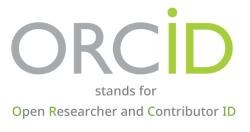
ORCID, which stands for Open Researcher and Contributor ID, is a global, not-for-profit organization that aims to provide unique identifiers for authors, researchers, and scholars. ORCiD effectively eliminates duplication and errors regarding author names, affiliations, previous works, and all related academic data.
IEREK is a proud member of ORCiD, and we contribute directly to their initiative of clear and identifiable markers for researchers and scholars. As the first Egyptian partner to ORCiD in the organization’s history, we strongly believe that by utilizing ORCiD’s database and verification services, we become one step closer to achieving an accurate, and identifiable academic landscape.
We encourage our authors to input their ORCiD ID when registering for one of our conferences, submitting an abstract, or a full paper. By doing so, you directly link your research to your identity and affiliation and can showcase your various academic efforts all in one place. By Registering your ORCiD ID, you also increase your works’ visibility and provide easy access to your entire library of research and academic activity.
Click here to learn more about ORCiD, and here to register your ORCiD ID for free.
Attending a conference dramatically enhances both your professional and personal development. They help you sharpen the saw, meet and converse with industry experts, expand your resources and grow your professional network. IEREK Conference will help you:
1. Open Discussions: We bring together leading academic scientists, from different universities and countries, to exchange and share their experiences and research results.
2. Internationally Accredited Certificate: The participants are granted internationally recognized certificates acknowledged by IEREK, the University, and Partnering Organizations.
3. Publication: Selected high-quality manuscripts will be published, after peer review, in the Advances in Science, Technology & Innovation (ASTI) book series by Springer or by IEREK Press Journals, both of which are indexed in world-renowned databases.
4. Research Technologies: Conferences can expand your resources by providing a great opportunity to promote gathered information on new technologies related to your research.
5. Networking: You can engage with industry experts to discuss with them the very latest research projects they could be working on and increase your chances of collaboration in future projects.
6. Academic Reputation: Attending many conferences will make you a known figure in academic circles and an active member of the academic community.
Rome stands as one of the finest and oldest cities in the world. The history of Rome spans over 2500 years and it has been a centre of power, politics, culture and development since its inception. Creation of the city is steeped in legend and mythology and there are various different accounts of how this majestic place was built. Various Roman emperors and Casers have ruled mighty Rome and this is the place where the colossal Roman Empire grew from.

This mighty structure is one of the most renowned and iconic landmarks in the world and a trip to Rome would not be complete without visiting the Colosseum.
Also known as the Flavian Amphitheatre, the Colosseum was constructed between 70-80 AD and at its peak was estimated to hold 80,000 spectators.

Rome holds a small country within a country – The Vatican.
This independent state is one of the most important religious sites in the world and St. Peter’s Square is an iconic place where many significant events have taken place.
Located at the front of the Vatican state, the square is actually circular and is framed by two huge sets of colonnades – Standing on these columns are beautiful statues of various religious figures and previous popes.

The mighty Pantheon stands as one of the best preserved ancient Roman buildings in the world and is one of Rome’s most famous attractions.
Constructed in 118 AD by emperor Hadrian, the building that stands today was actually built on the site where an earlier temple stood that was commissioned by Agrippa.

There are not many other fountains in the world as lavishly decorated and sculptured as the Trevi fountain.
Constructed in 1762 by Nicola Salvi, the fountain pays tribute to the Roman God Oceanus who can be seen riding his chariot pulled by Tritons and taming several Hippocamps.
The detail of the sculptures is simply wonderful and the whole facade and fountain are a true work of art.

Part of the Vatican museum complex, the Sistine Chapel is one of the most renowned religious chapels in the world and has a stunning amount of detail and iconography.
Situated in the Apostolic Palace in the Vatican City, the Sistine Chapel was extensively restored in the 1400’s and the place where the papal enclave takes place – It is here that a new pope is selected.
The Sistine Chapel is particularly famous for its extensive and detailed decorations including the Last Judgement fresco by Michelangelo and the ceiling artwork.
All accepted submissions to the conference, after a rigorous double-blinded peer-review process by the respective and a highly-extinguished Editorial Board, will be published in one of the following:
 Advances in Science, Technology and Innovation (ASTI), an IEREK Interdisciplinary book series published by Springer Nature. (Scopus indexed)
Advances in Science, Technology and Innovation (ASTI), an IEREK Interdisciplinary book series published by Springer Nature. (Scopus indexed) About ASTI
Advances in Science, Technology & Innovation (ASTI) is a series of peer-reviewed books based on important emerging research that redefines the current disciplinary boundaries in science, technology and innovation (STI) in order to develop integrated concepts for sustainable development. It not only discusses the progress made towards securing more resources, allocating smarter solutions, and rebalancing the relationship between nature and people, but also provides in-depth insights from comprehensive research that addresses the 17 sustainable development goals (SDGs) as set out by the UN for 2030.
The series draws on the best research papers from various IEREK and other international conferences to promote the creation and development of viable solutions for a sustainable future and a positive societal transformation with the help of integrated and innovative science-based approaches. Including interdisciplinary contributions, it presents innovative approaches and highlights how they can best support both economic and sustainable development, through better use of data, more effective institutions, and global, local and individual action, for the welfare of all societies. The series particularly features conceptual and empirical contributions from various interrelated fields of science, technology and innovation, with an emphasis on digital transformation, that focus on providing practical solutions to ensure food, water and energy security to achieve the SDGs. It also presents new case studies offering concrete examples of how to resolve sustainable urbanization and environmental issues in different regions of the world. Read More.
 IEREK Press Journals, a multidisciplinary publisher that aims to cultivate and disseminate research.
IEREK Press Journals, a multidisciplinary publisher that aims to cultivate and disseminate research.
ESSD is a peer-reviewed, scholarly journal that aims to systematically develop the research-driven curiosity and evidence-based discourse of aspiring scholars that seek to contribute to the academic community. As the world is currently living in an age of information where sources are widely available on the Internet, we at ESSD seek to efficiently utilize the available information to help create robust and evidence-based knowledge. In the process, we offer researchers, in general, and young and aspiring ones in particular a quicker way to get their work published and gain exposure through online open access. We pride ourselves on getting submitted work to be published quickly, through the use of our worldwide pool of subject specialist peer reviewers. Find out more about ESSD International Journal here.

ARChive is an open-access journal that publishes conference proceedings on a wide range of topics relating to social sciences. Consequently, it accepts original research papers on a wide spectrum of subjects. ARChive is a journal published on behalf of researchers that perpetually make an effort to contribute to their fields and provide them with high visibility of research submitted. The series publishes, both, theoretical and experimental high-quality papers of current and perpetual interest. It serves to cultivate, propagate, and essentially archive academic research that has been authored and submitted for academic conferences.
Find out more about ARChive International Journal here.

Resourceedings is an open access journal that publishes conference proceedings. Conference proceedings compromise of different disciplines, ranging from Engineering including built environments, architecture, and sustainability. Disciplines also include Technology and Energy. Resourceedings is a journal that publishes research articles that shed light on different crucial issues in order to provide them with solutions and suggestions. The journal publishes articles submitted by researchers of interest in different fields.
Find out more about Resourceedings International Journal here.
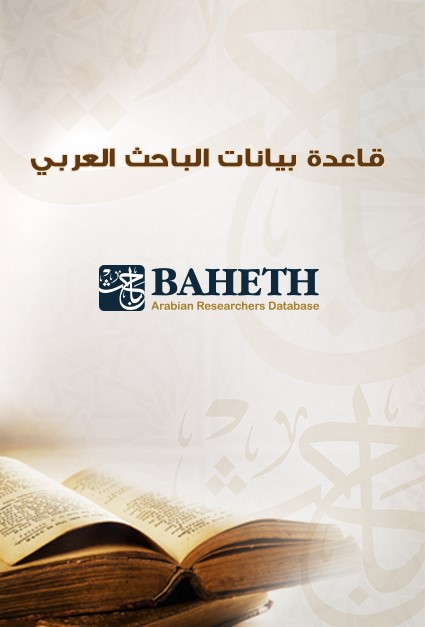
“BAHETH” in Architecture, Engineering, and Technology, is a peer-reviewed journal that publishes original academic research in the fields of Architecture, Engineering, and Technology. The journal welcomes research in the Arabic Language with an English Abstract. Papers submitted to this journal in Arabic must be presented in the English Language in the conference.
Find out more about BAHETH International Journal here.
For IEREK's Provious Publications, Please Click here
- Green Urbanism (GU)-1st Edition held in Roma Tre University, Rome, Italy in October, 2016.

- Green Urbanism (GU)-2nd Edition held in Roma Tre University, Rome, Italy in December, 2018.


- Green Urbanism (GU)-3rd Edition held in University of Rome Tor Vergata, Rome, Italy in December, 2019.

- Green Urbanism (GU)-4th Edition held in University of Rome Tre, Rome, Italy in December, 2020.

- Green Urbanism (GU)-5th Edition held in Sapienza University of Rome, Italy in December, 2021.

- Green Urbanism (GU)-6th Edition held online in collabration with University of Rome Tor Vergata, Rome, Italy in November, 2022.
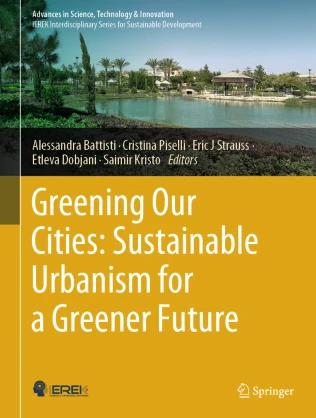
- Green Urbanism (GU)-7th Edition held online in collabration with University of Rome Tor Vergata, Rome, Italy in December, 2023.
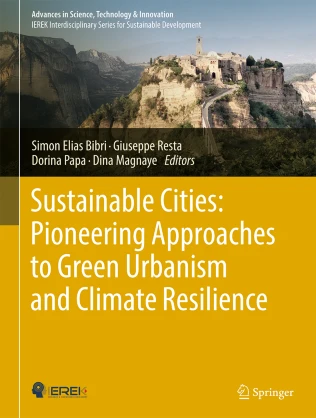
credit is fraudulent. The Reviewing committee and IEREK employees have the authority to reject a paper during its reviewing process, on the basis of the paper being subjected to either minor or major plagiarism.
Authors must refer to, and abide by, the following instructions in submitting their abstracts/ papers:
This is not a prerequisite for presenting your work at the conference. Meaning, you can present your submitted abstract without intending to publish your work.
This process can only be initiated after payment completion and confirmation:
Registration
To help the organizers plan for inter-disciplinary dialogue, participants are requested to choose from the conference themes/ Topics upon registration.
They must also refer to, and abide by, the following instructions in registering and submitting their abstracts/ papers:
Types of Participation
Organized from the comfort of your own home, the conference offers a virtual attendance option for your convenience. That said, participants will have a chance to present their abstract/research, online, and have their work considered for publication in the proceedings.
Virtual presenters are required to submit an abstract and extend this abstract following the “author instructions” below and before the deadline (see Important Dates). At least one author must pay the registration fee (see Conference Fees).
For any reason, authors may wish to submit pre-recorded video presentations no later than 15 days prior to the conference. Alternatively, they may wish to record a voice-over PowerPoint presentation for submission to the conference organizers.
Organized at the University of Cagliari, Sardinia, Italy, offering a Physical attendance option for your convenience. That said, participants will have a chance to present their abstract/research, on campus, and have their work considered for publication in the ASTI Series by Springer as part of the conference proceedings.
See Author Instructions and Conference Fees for more information.
If your extended abstract (short paper) is accepted, it may be published in the conference proceedings book in the Advances in Science, Technology & Innovation Book Series by Springer (indexed in Scopus) even if you are not attending the conference. In this case, the accepted work will not be included in the final conference program and the fee will cover the cost of editorial handling and peer-review evaluation of your paper (See Author Instructions and Publishing Opportunities)
Non-presenting participants may also wish to attend the conference as Audience Members or Co-authors contributing to an already submitted abstract/ paper.
Prof. Laura Ricci, Full Professor Architectural Planning, Design and Technology, Sapienza University of Rome, Italy
Prof. Carmelina Bevilacqua, Associate Professor of Architectural Planning, Design and Technology, Sapienza University of Rome, Italy
Prof. Carmela Mariano, Associate Professor of Architectural Planning, Design and Technology, Sapienza University of Rome, Italy
Prof. Irene Poli, Associate Professor of Architectural Planning, Design and Technology, Sapienza University of Rome, Italy
Prof. Francesco Crupi, Researcher of Architectural Planning, Design and Technology, Sapienza University of Rome, Italy
Prof. Marsia Marino, Researcher of Architectural Planning, Design and Technology, Sapienza University of Rome, Italy
Prof. Francesca Perrone, Researcher of Architectural Planning, Design and Technology, Sapienza University of Rome, Italy
Prof. Pola Nicoletta Imbesi, Researcher of Architectural Planning, Design and Technology, Sapienza University of Rome, Italy




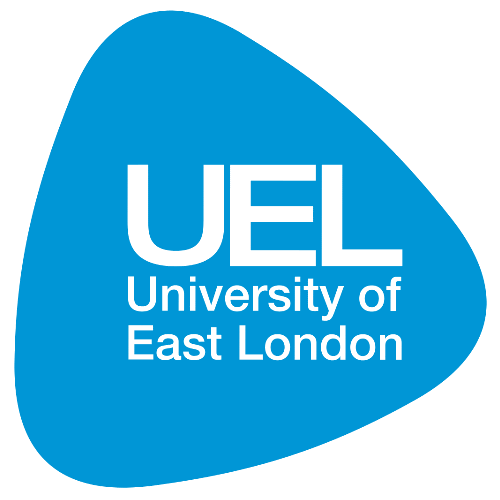











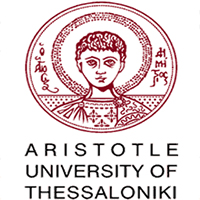
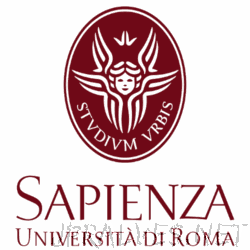
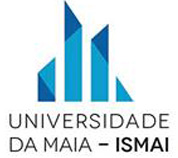


 Carmelina Bevilacqua
Carmelina BevilacquaAssociate Professor in City and Regional Planning at the Departmnet of Planning, Design, Architectural Technology Sapienza University of Rome, Italy.

Professor at the Urban Planning Department of Architecture, Polytechnic School University of Palermo, Italy.
Subscribe to our newsletter
Join IEREK community